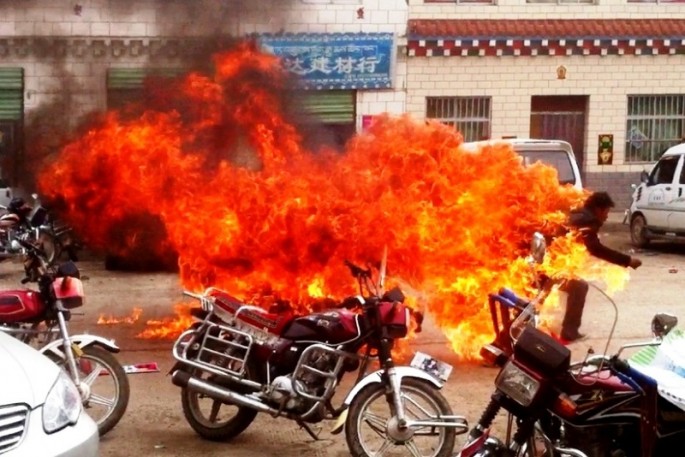A Tibetan Buddhist monk, named Kalsang Wangdu, burned himself on Feb. 29 outside the Retsoka Aryaling monastery in Xinlong country. Wangdu died from burns.
Wangdu self-immolated to protest the Chinese government’s continued control over Tibet. He called for Tibet’s complete independence from China, Time cited a Radio Free Asia report which based the story on an anonymous source in the Kardze Tibetan Autonomous Prefecture in Sichuan Province.
ABC checked with the Kardze Police on Wednesday through a phone call and talked to a man named Li who denied the incident. “We are now in a period of preserving stability. If such a thing happens, we will make it known to the public,” he said.
Other Buddhist monks in and out of Tibet had burned themselves or joined protest actions to pressure Beijing to free Tibet. Since 2009, over 140 Tibetan Buddhist monks in China had self-immolated to push for self-rule and allow the Dalai Lama, who fled Tiber in 1959, to return to his homeland.
Outside China, a 16-year-old Tibetan monk, in exile at Uttarakhand, a state of India, tried to burn himself also on the same day. However, the young monk failed in his attempt and is undergoing treatment at a New Delhi hospital.
However, China refuses to do budge. Beijing continues to blame the Dalai Lama – whom many Tibetan Buddhist monks consider their spiritual leader – for inciting his followers to immolate themselves. In refusing to give up Tibet, China said it has made significant investments to develop the region.
In 2015, Chen Quanguo, Communist Party chief in Tibet, ordered Buddhist monasteries to display China’s flag to further push members of the religion to be patriotic to China.



























